Prehistoric monuments with London views - Richmond Park and Horsenden Hill, Wembley
From King Henry's Mound, a Bronze Age burial site in Richmond Park with a protected view of St Paul's; winding up the River Brent to a former hillfort in Wembley
I explore the weird and wonderful in the English landscape and write about it every couple of weeks. If this sounds like something that would interest you, why not subscribe? Or, if you’re already subscribed, consider recommending to a friend to whom it might also bring joy?
It’s a breezy-sharp sun-bright day: the catalytic converter was recently stolen from the car, but we have to get out. We taxi to Richmond, to walk a segment of the Capital Ring: the path that circles the fringe of Zones 3-4. I’ve planned a route between King Henry’s Mound in Richmond Park and Horsenden Hill in Wembley: two places that have been on my list.
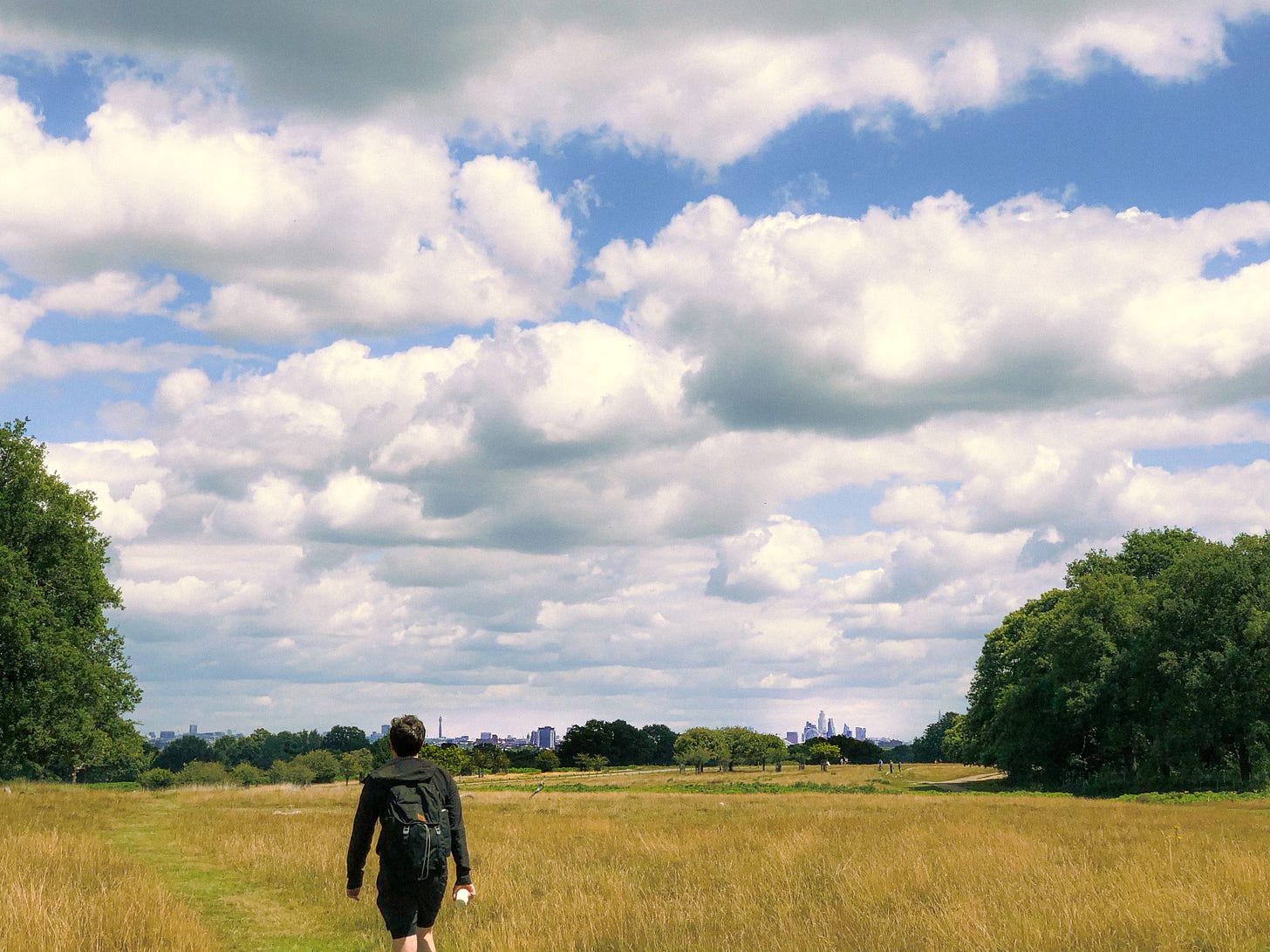
Views of Central London from Richmond Park.
I had thought Richmond Park was ancient but was surprised to learn it was only enclosed in the time of Charles I. Prior to this it was a deer hunting area belonging to the nearby Manor of Sheen. It was Henry VII who built Richmond Palace here, naming it after his earldom in Yorkshire. Both Henry VIII and Elizabeth I are known to have hunted here before it was ‘imparked’, an excellent verb if ever there was one.
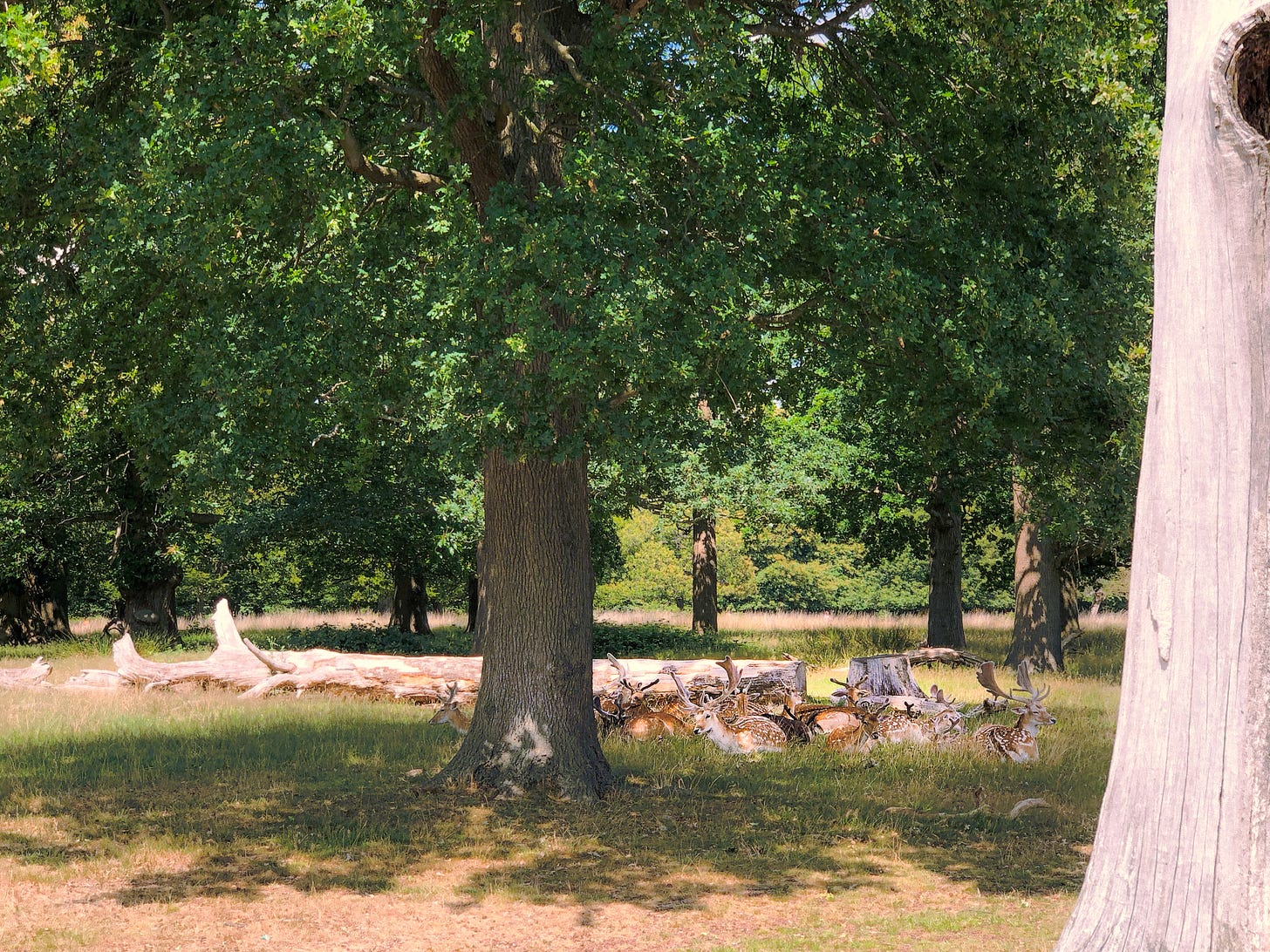
Deer relaxing in the shade, Richmond Park.
Between the pale grasses and bleached trees the wide lane leads to Pembroke Lodge, in whose grounds lies King Henry’s Mound. Armed with generous scoops of mint choc chip, we enter the gardens. Even then, the probable Bronze Age burial mound, despite its considerable size, doesn’t immediately make itself known; mainly due to a holly arbour planted atop by landscaping 19th century forebears.
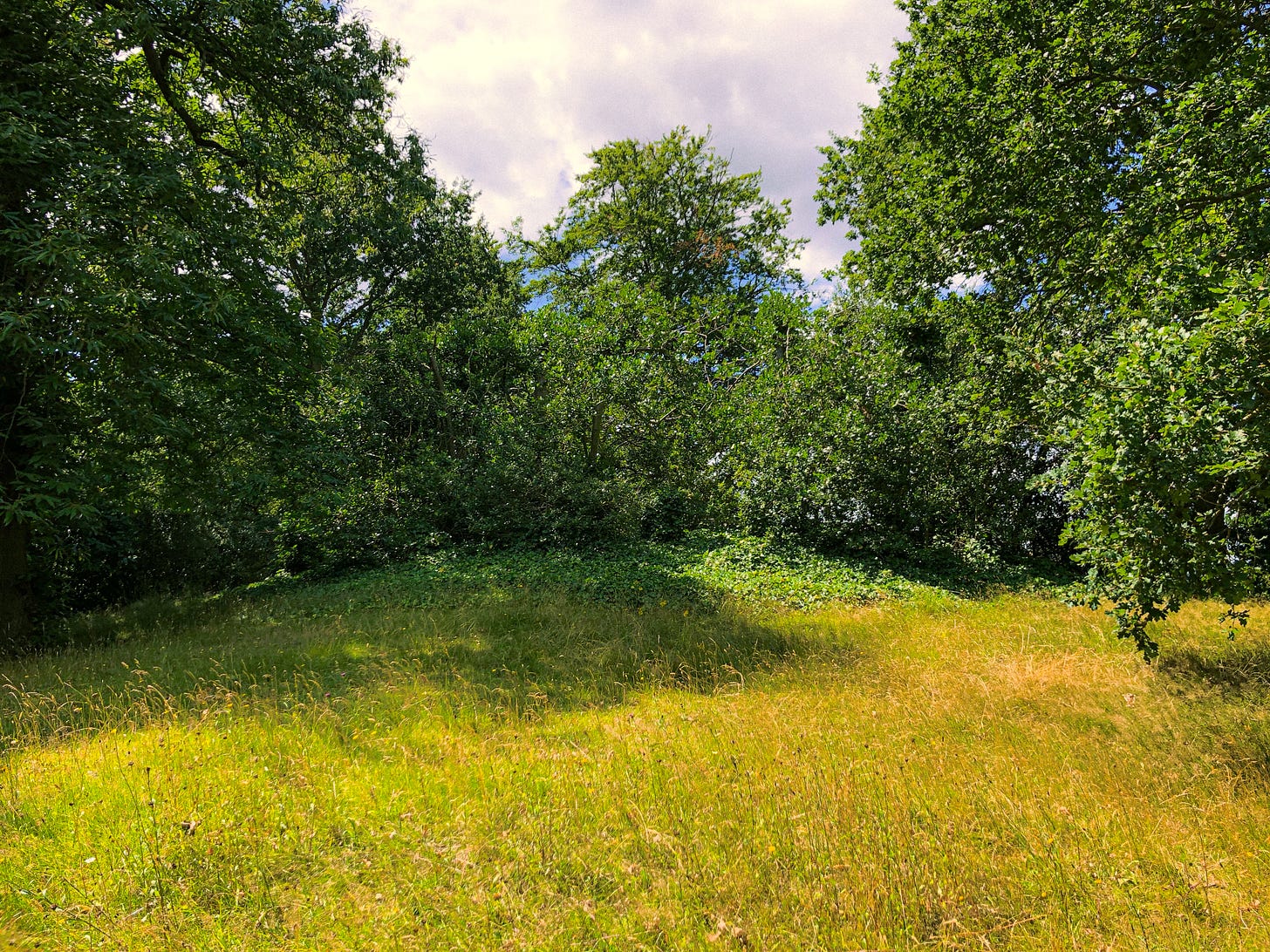
King Henry’s Mound, a probable Bronze Age burial mound.
This and the paving on top, fenced around with twirling iron railings, with benches and signboards detailing the view, rather spoils any lingering Bronze Age ambiance. This is all to trumpet the main attraction here, which is of a much more recent vintage: a completely unobstructed view of St Paul’s Cathedral. Difficult to make out with the naked eye, you can peer through the telescope which offers a view of the distinctive dome glimmering 10 miles distant through an improbable keyhole in the trees.
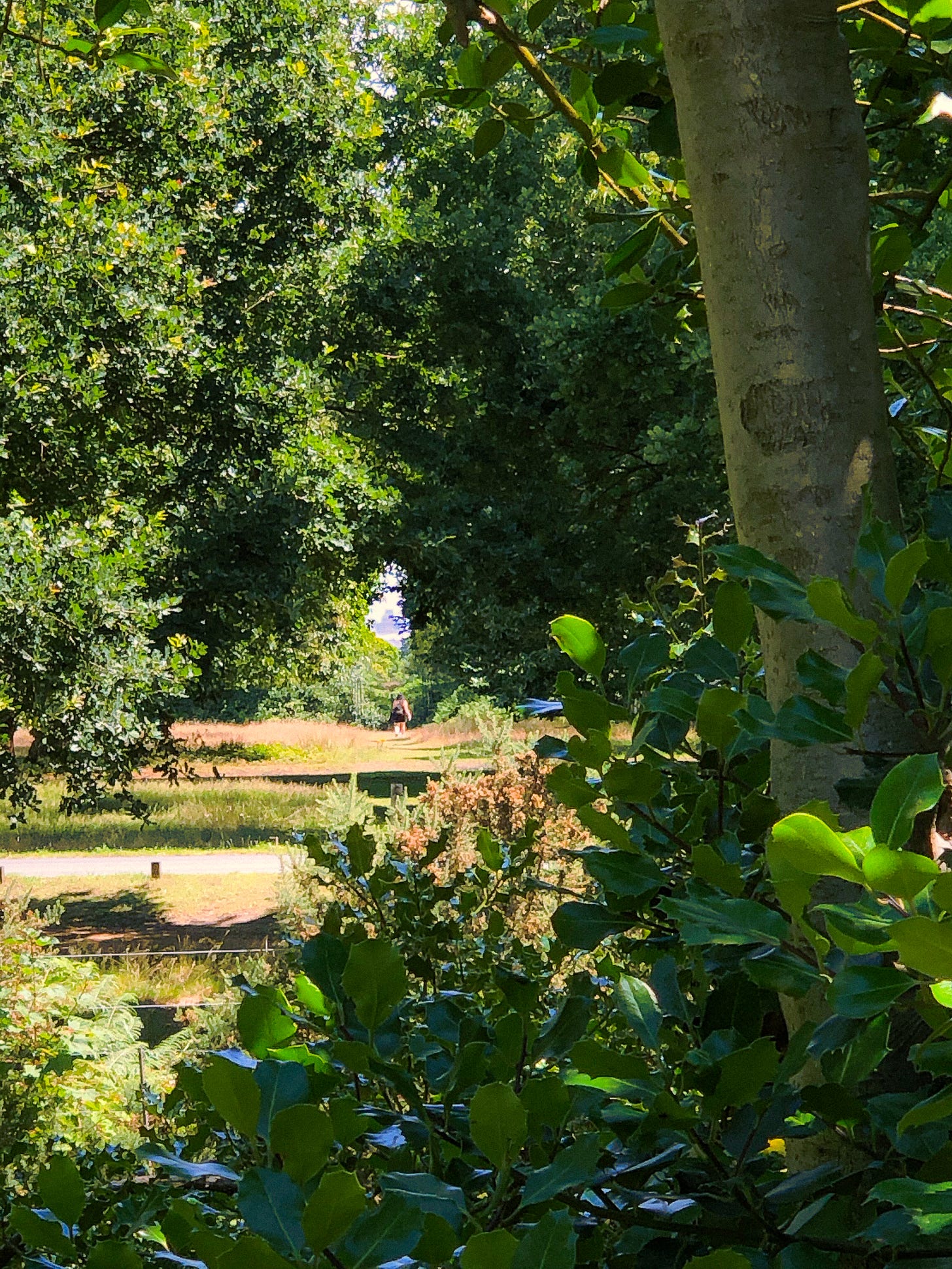
The legally protected view of St Paul’s.
Indeed, the mound was named supposedly due to it being where Henry VIII stood to see a rocket launched from the Tower of London indicating Anne Boleyn was dead, although this story is probably untrue. Possibly in pre-telescope days, clearer air made it easier to pick out the Cathedral silhouette. It is now actually illegal to spoil this view with massive and obstructive buildings, leading you to wonder how many millions —possibly, billions— we have paid for this little vignette. Of course, I am not complaining. The fact that our legal system can protect something so ephemeral has a certain poetry.

An urban herd of Belted Galloways next to the river in Richmond.
Whilst three human skeletons and a large quantity of ashes have been discovered in and around the mound, excavations have been unable to confirm a prehistoric origin. The most compelling evidence lies to the west, in the scarp’s breathtaking drop to the Thames and then the wider valley beyond; woolly with trees, bejewelled by Ham House, Windsor Castle and Great Park in the distance, and then Heathrow and Twickenham and all the other suburbs gathered around former manors and abbeys.
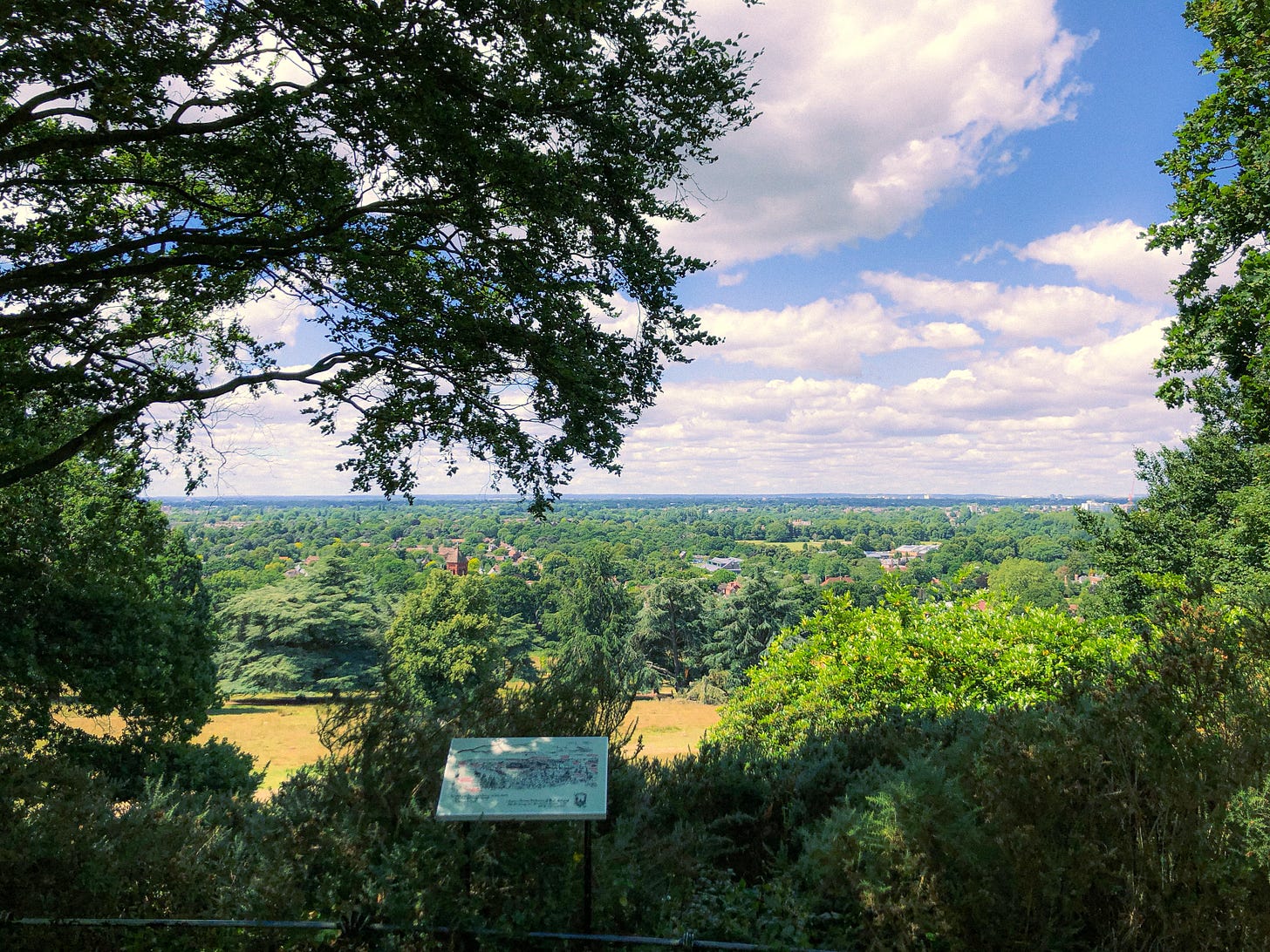
View across the Thames Valley towards Windsor from the top of King Henry’s Mound, Richmond Park.
A compelling aspect for a Bronze Age chieftain, who could survey his territory even as allies and enemies marvelled up at the mound perched on the ridge from below. There is another Neolithic long barrow about a kilometre to the south, but we have a long way to walk, so we skip it today.
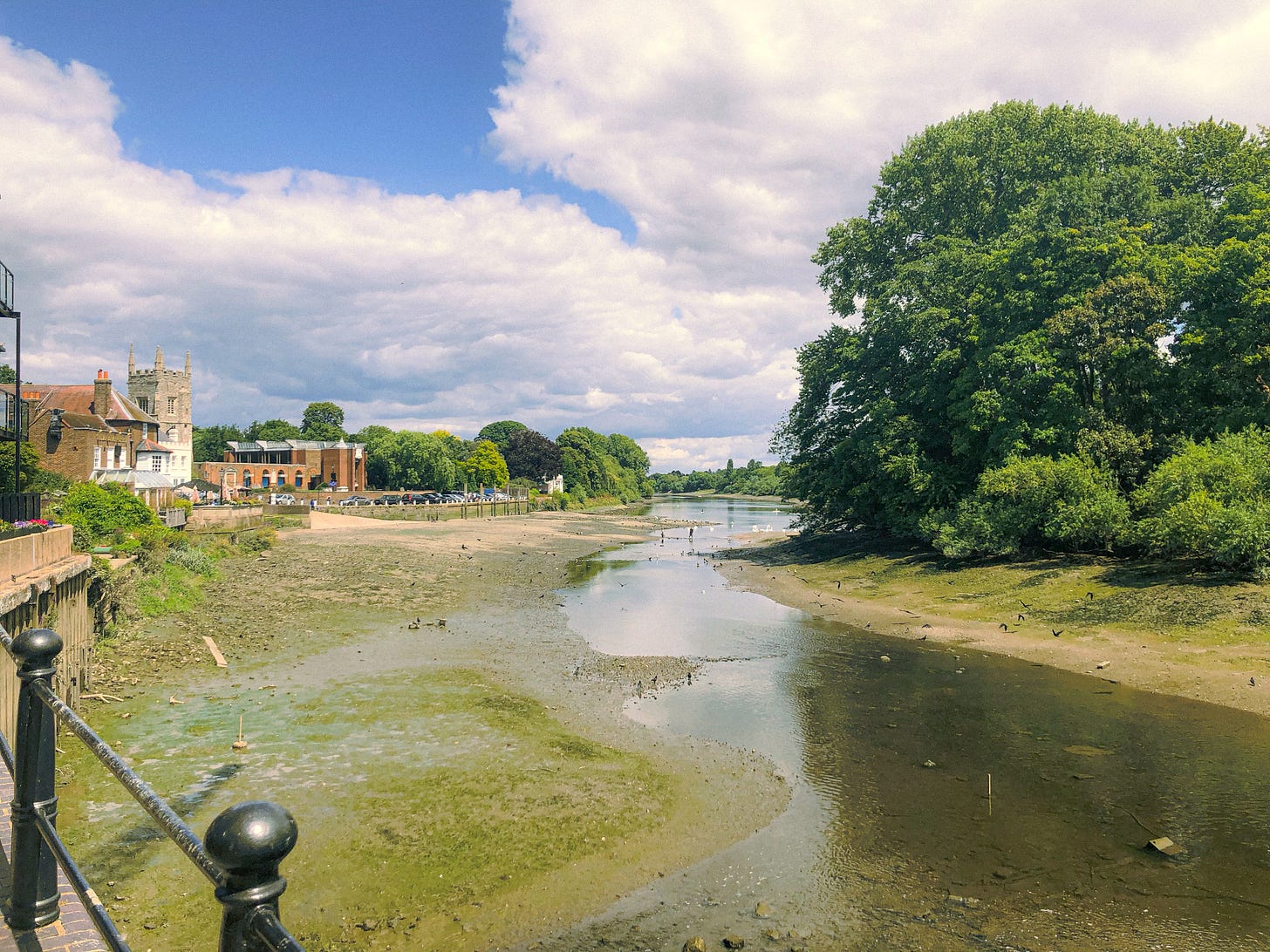
Thames mudflats towards Isleworth.
We drop down into the valley, to the path alongside the Thames. Today a stream of humanity; kayaking, paddleboarding, biking, ingesting meat and champagne in pub gardens. The atmosphere is continental: positively holidaylike, and we suncream up. Crossing the river, we wind along the river bank through Isleworth: a charming hamlet whose main thoroughfare still carries the air of a village street. Weeping willows flood the banks; a fat island divides the river between us and Kew; in the channel nearest to us there is barely water, revealing the mudflats slatted with wires and chains and metal bits; birds perch in the water one-legged. We cut through the yard of All Saints Church, its wonderful 14th century ragstone tower still standing, a modern building affixed to the bottom, having been burned down by two unruly boys during WW2. Fragments of the c17th stonework and memorials are embedded in the brick walls, which is rather haunting.
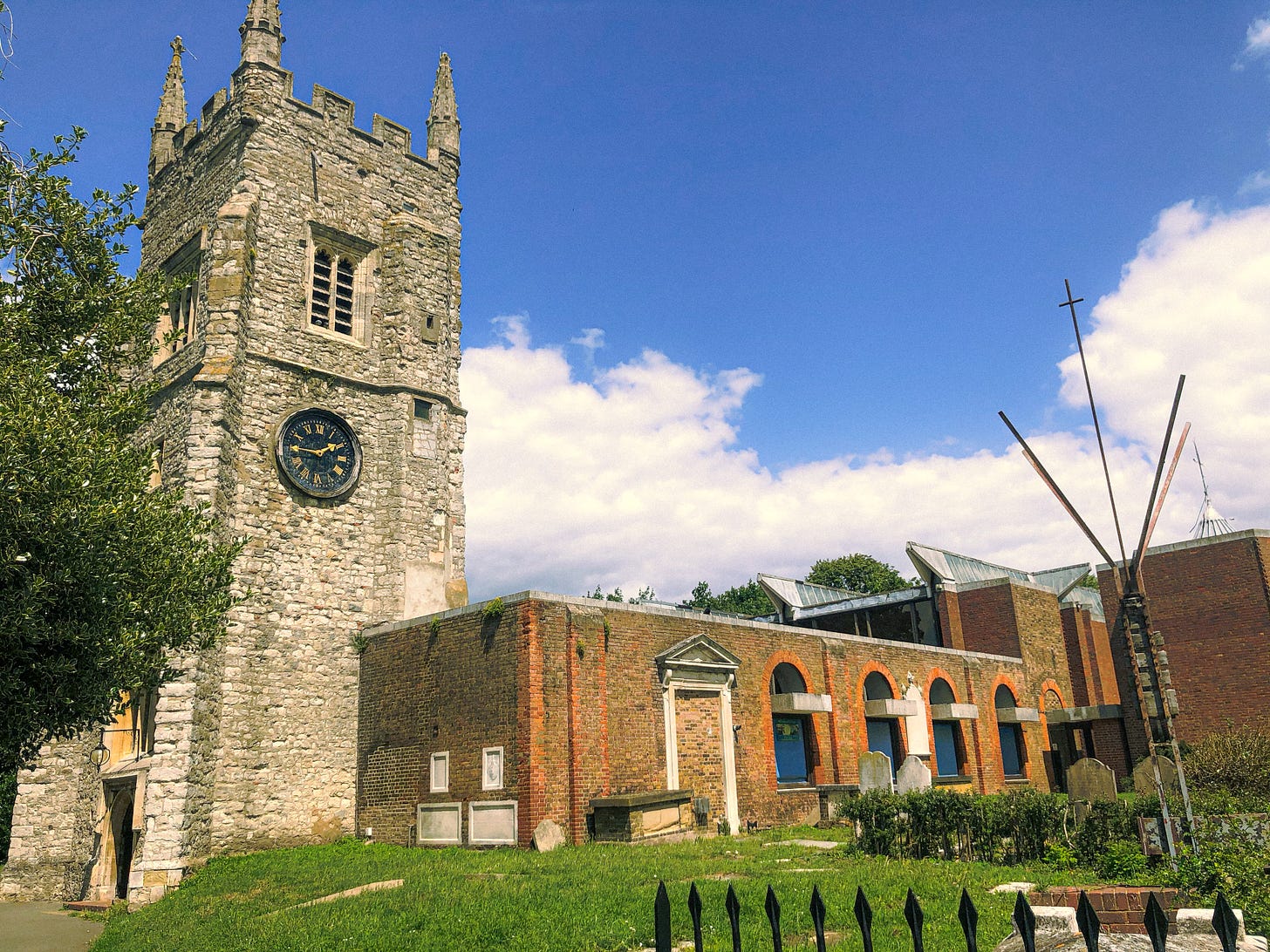
All Saints’ Isleworth, with fragments of the former church embedded in the modern building.
Crossing the road we enter the ancient estate of Syon Park, London seat of the Duke of Northumberland. Its flat-faced castle isn’t especially pleasing, and there are ruins of a former abbey in the ground which we aren’t able to see. However, it is surrounded by yet more delightful and unexpected farmland, in which we picnic in view of cows.
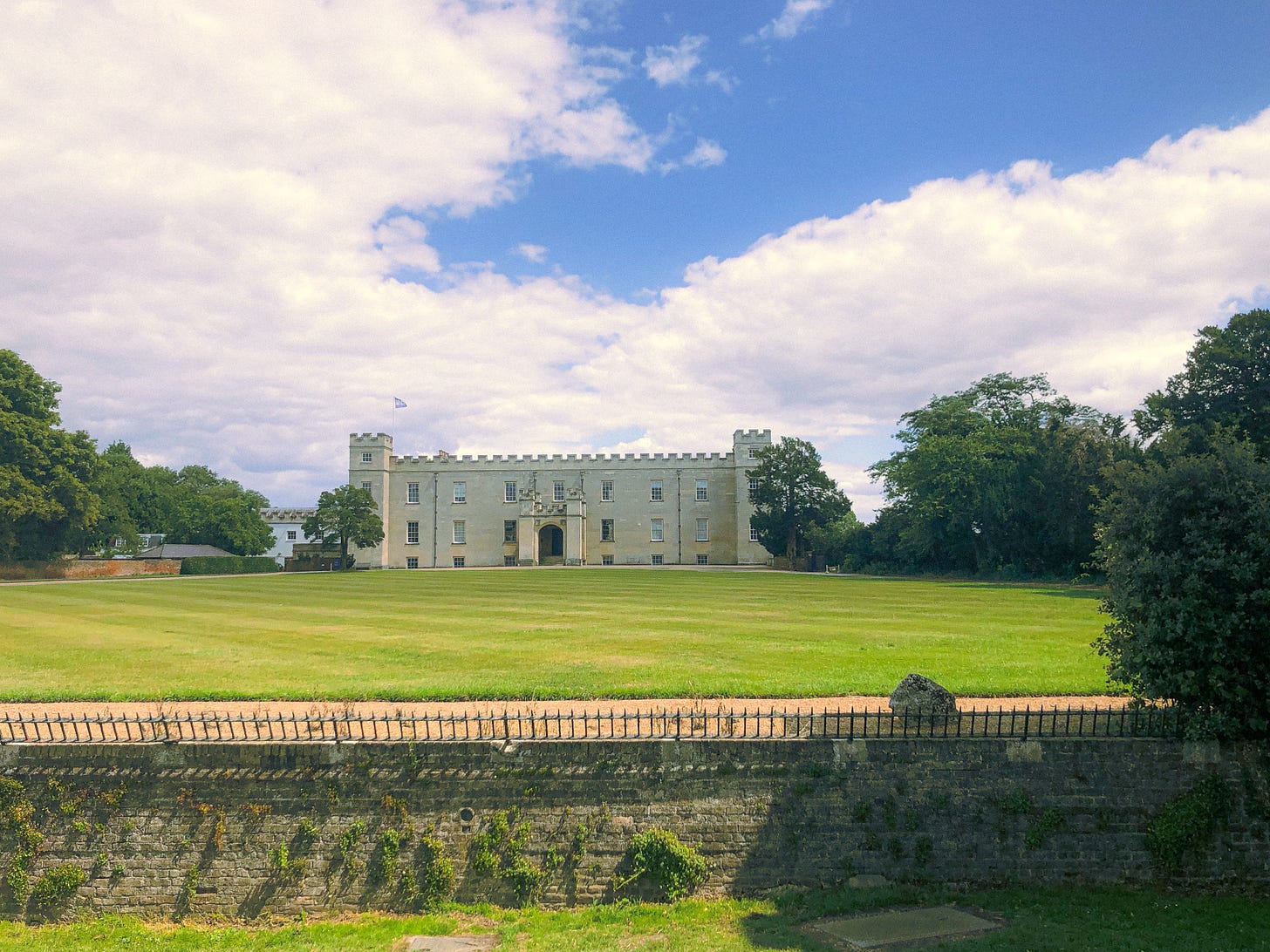
Syon Park, London seat of the Duke of Northumberland.
Turning inland, we join the River Brent a little upstream of its Thames confluence. The river is small and slow-moving; we pass few people on the towpath, and occasionally, plunged between fringes of trees, slight breezes rustling the rushes and willows, the coots plaintively cheeping, you could be in the middle of nowhere: no road noise, no evidence of buildings.
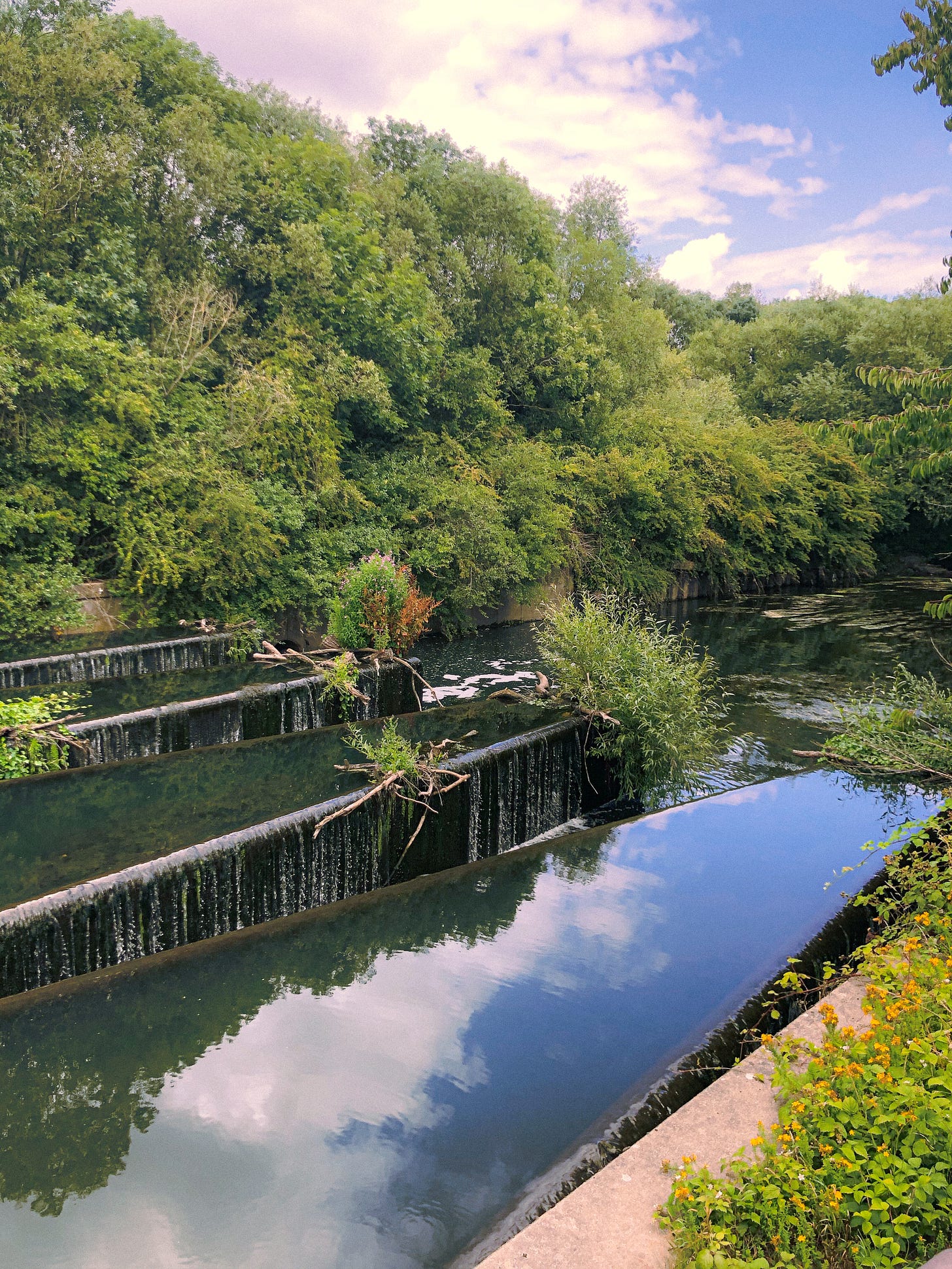
A weir on the River Brent.
We pass weirs and early 19th century bridges, waterside new-builds and kayaking stations, skeleton warehouses converted to public artworks. We pass the GSK headquarters, that shimmering tower visible from the Westway as you’re driving out of London: they have a pump that cleanses water and expels it back into the river. We wind north in this way for several miles: through Hanwell’s parks and golf courses, turning off by the wonderful flowering meadows in Perivale Park.
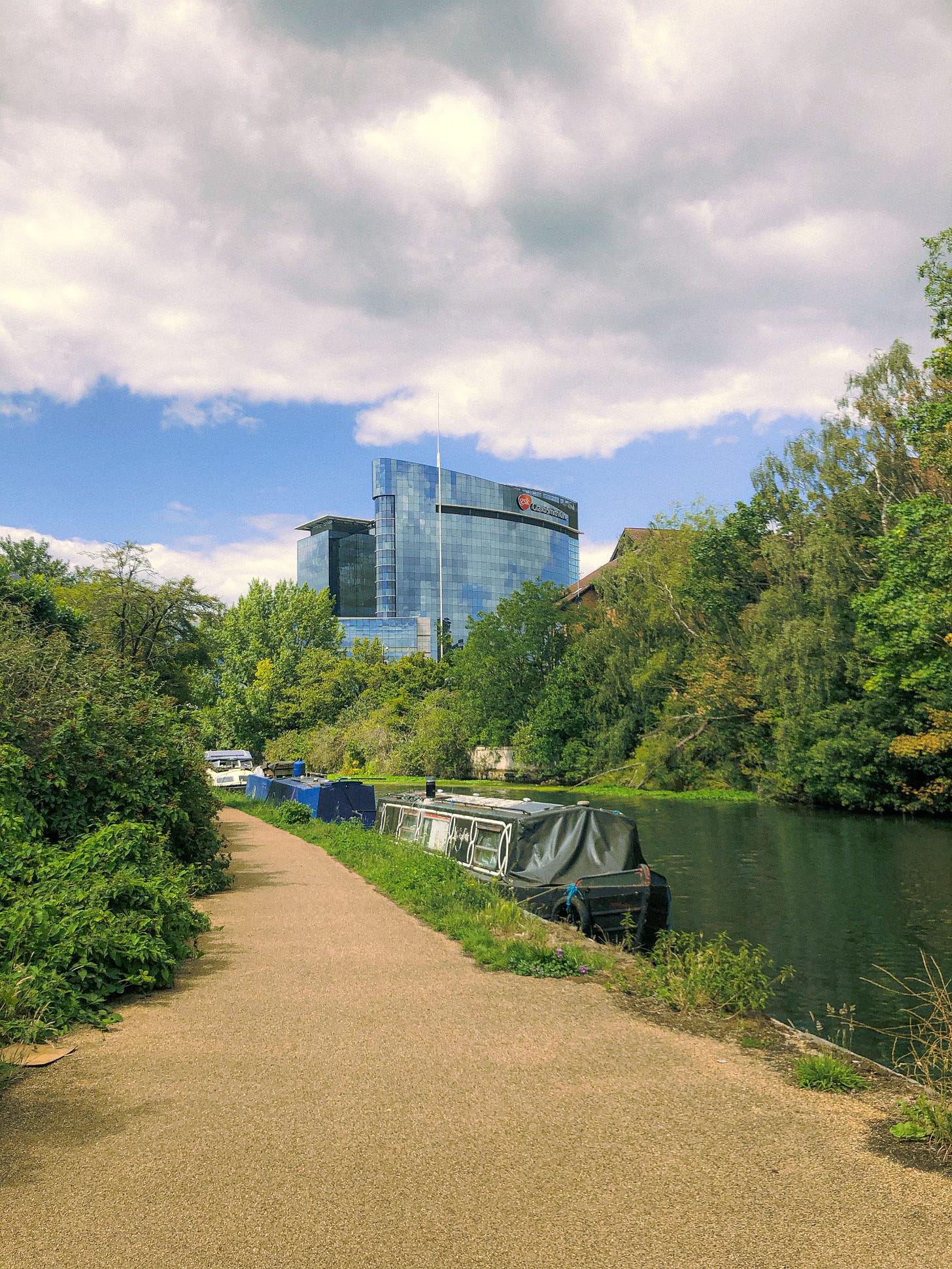
GSK offices, Brentford.

A quiet spot on the Brent.

Wildflower meadows, Perivale Park.
The wooded Horsenden Hill, our goal, protrudes in the distance. We pass through the Westway shopping park, brushing up against the drive-thru McDonalds, resisting the urge for what my husband calls ‘victory lap McNuggets’. We cut through Horsenden Park, full of woody nooks where youth are getting up to things, bbq-ing, blackening the grass in the path where we step over it. We climb the hill’s steep incline, up to 85m. In the Iron Age this was once a multivallate hillfort; not much of this is visible today except a few slight undulations in the ground as you reach the summit.

Undulations in the ground — remains of Iron Age earthworks? — towards Horsenden Hill summit.
We emerge from the thick wood, where light dapples onto the foxgloves, into the clearing, where the viscous waves of recent club hits ripple from two lads’ portable speakers. A couple of groups are picnicking on the flat summit: perfect for the communities that, since the Stone Age, have settled here. The wooded edges of the hill drop away into the Thames valley; the opposite aspect on this morning’s vista, looking once again towards the distant Windsor.
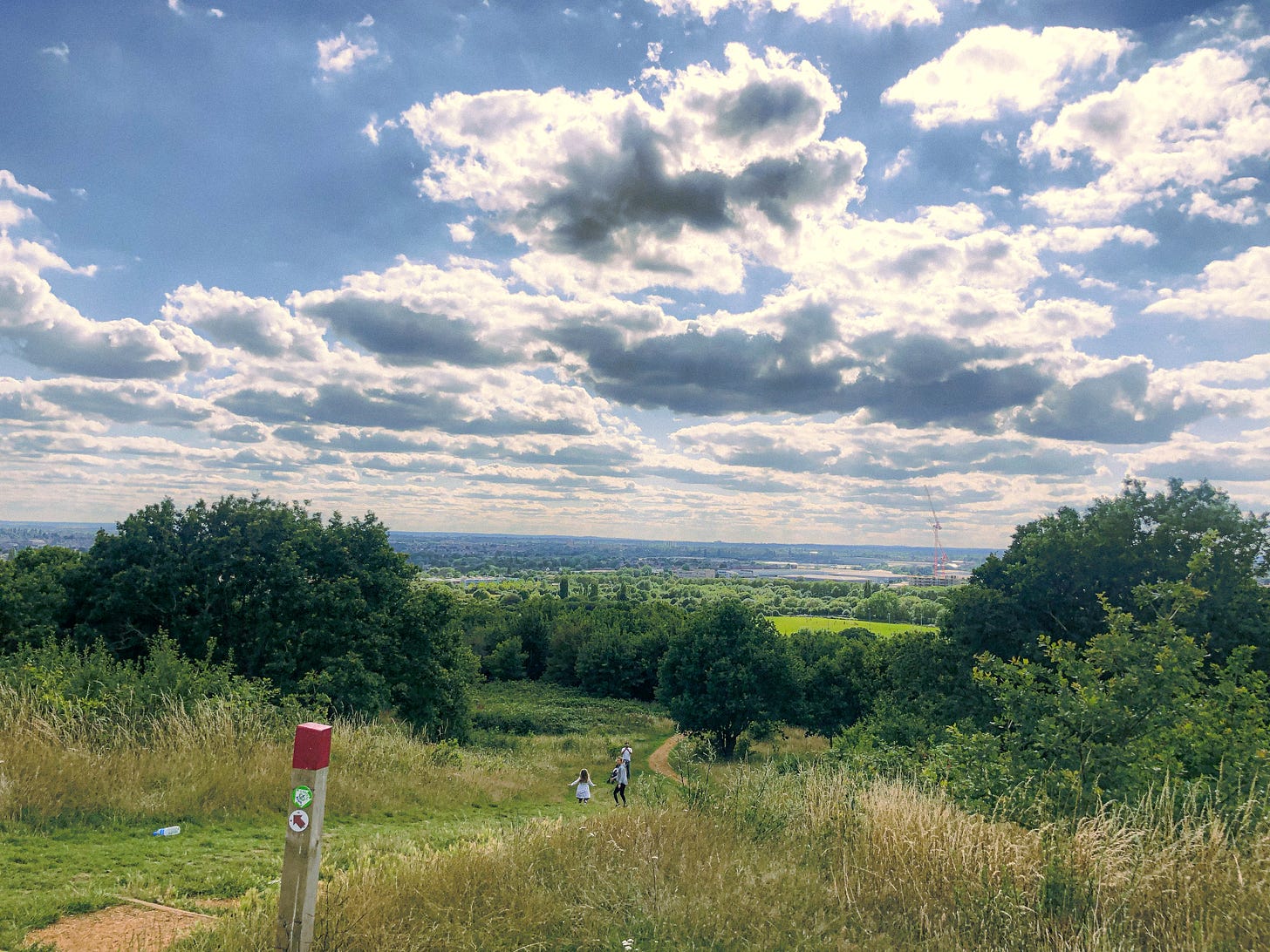
View of the Thames Valley, again looking towards Windsor: this time from the north.
With its draped counterpane of trees, it is easy to imagine a Stone Age man or woman looking down upon the stretching thicket, perhaps a few columns of smoke snaking upwards from rare clearings. We rest for a moment and take in the view, the air traffic control tower at Heathrow almost close enough to touch.
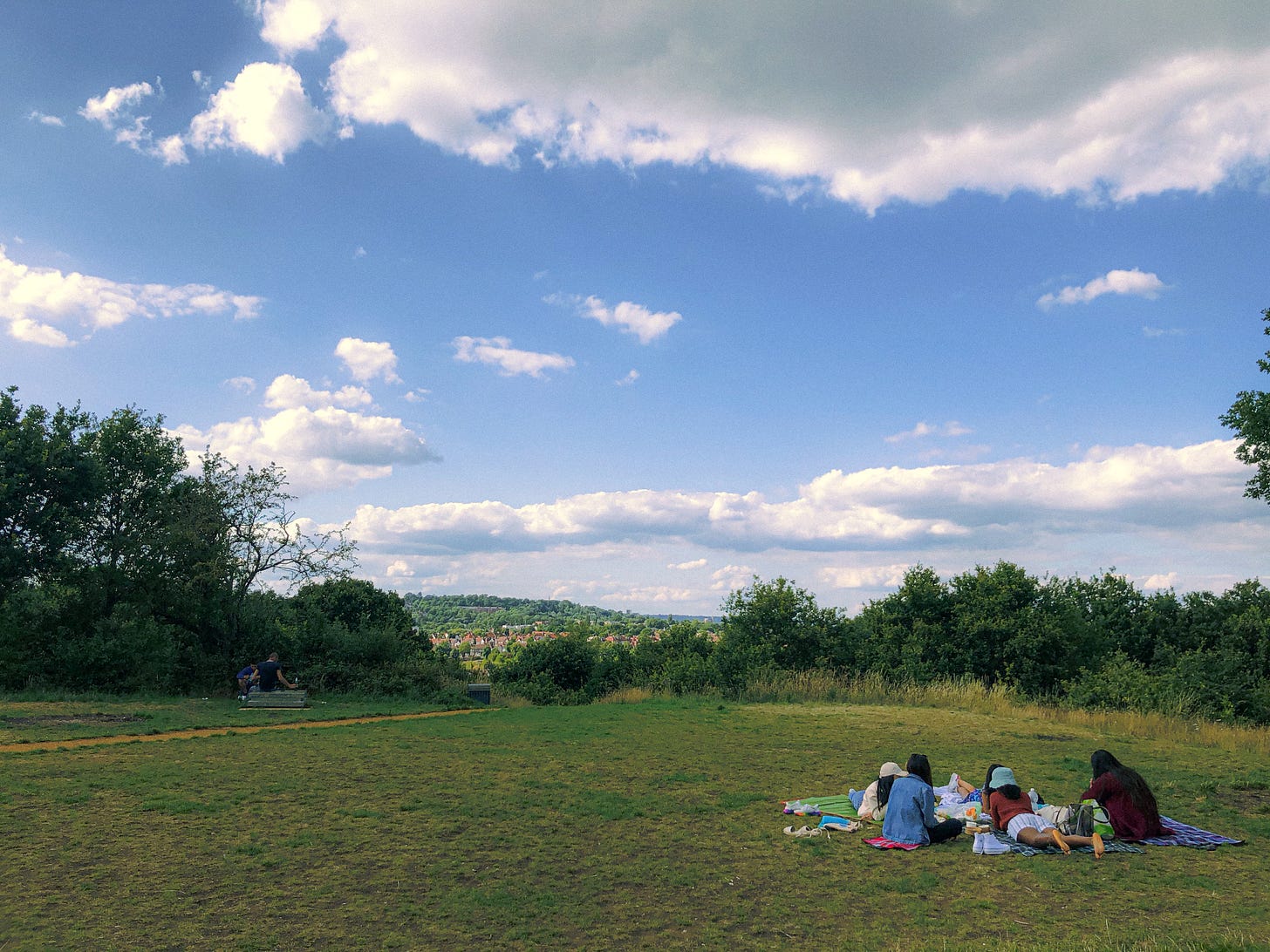
Picnicing atop Horsenden Hill, Wembley.
If you’d like to follow the route we took on this walk, you can find it here.
I hope you enjoyed this week’s walk! Please send me your comments, feedback and recommendations for places to visit… is there somewhere in your area that deserves a little more attention? You can comment directly on this post, or reach me on Twitter or Instagram: I’d love to hear from you.
If you enjoyed reading, please consider subscribing, or sharing this newsletter with a friend.
Sincerely,
Ruth



